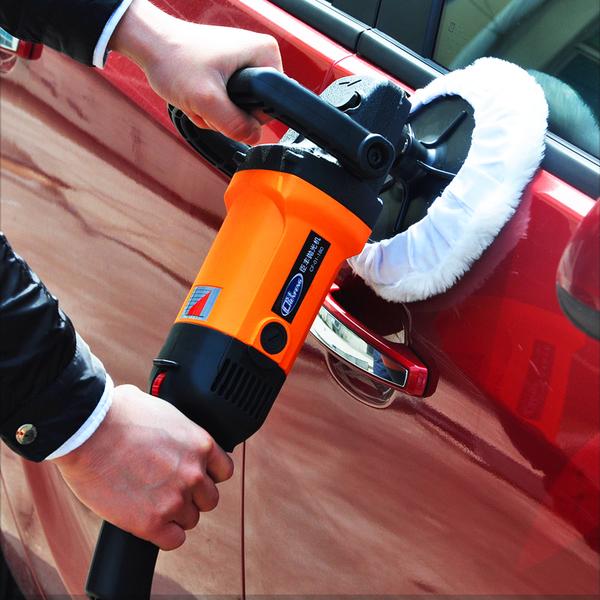What is Polishing
Polishing refers to the use of mechanical, chemical or electrochemical effects to reduce the surface roughness of the workpiece to obtain a bright and smooth surface. It is the use of polishing tools and abrasive particles or other polishing media to modify the surface of the workpiece.
Polishing can not improve the dimensional accuracy or geometric accuracy of the workpiece, but for the purpose of obtaining a smooth surface or mirror gloss, and sometimes it is also used to eliminate gloss (matting). Usually a polishing wheel is used as a polishing tool. The polishing wheel is generally made of multiple layers of canvas, felt or leather. The two sides are clamped by metal circular plates, and the rim is coated with a polishing agent that is uniformly mixed with micronized abrasives and grease.
Mainstream grinding and polishing technology
1.Mechanical polishing
Mechanical polishing is a polishing method that relies on cutting and plastic deformation of the material surface to remove the polished convex parts to obtain a smooth surface. Generally, oil stone sticks, wool wheels, sandpaper, etc. are used, mainly manual operations, special parts such as rotation For the surface of the body, auxiliary tools such as a turntable can be used, and the method of ultra-precision polishing can be used for the surface quality requirements. Ultra-precision polishing is the use of special abrasive tools, which are pressed tightly on the processed surface of the workpiece in a polishing fluid containing abrasives for high-speed rotation. Using this technology, the surface roughness of Ra0.008μm can be achieved, which is the highest among various polishing methods. Optical lens molds often use this method.
2.Chemical polishing
Chemical polishing is to make the surface microscopic convex part of the material in the chemical medium dissolve preferentially than the concave part, so as to obtain a smooth surface. The main advantage of this method is that it does not require complex equipment, can polish workpieces with complex shapes, and can polish many workpieces at the same time, with high efficiency. The core problem of chemical polishing is the preparation of polishing liquid. The surface roughness obtained by chemical polishing is generally several 10 μm.
3.Electrolytic polishing
The basic principle of electrolytic polishing is the same as that of chemical polishing, that is, by selectively dissolving tiny protrusions on the surface of the material to make the surface smooth. Compared with chemical polishing, the effect of cathode reaction can be eliminated, and the effect is better. The electrochemical polishing process is divided into two steps: (1) Macroscopic leveling The dissolved products diffuse into the electrolyte, and the geometric roughness of the material surface decreases, Ra>1μm. (2) Low-light leveling: Anode polarization, surface brightness is improved, Ra<1μm.
4.Ultrasonic polishing
Put the workpiece into the abrasive suspension and put it in the ultrasonic field together, relying on the oscillation effect of the ultrasonic, so that the abrasive is ground and polished on the surface of the workpiece. Ultrasonic machining has a small macroscopic force and will not cause deformation of the workpiece, but it is difficult to manufacture and install tooling. Ultrasonic processing can be combined with chemical or electrochemical methods. On the basis of solution corrosion and electrolysis, ultrasonic vibration is applied to stir the solution, so that the dissolved products on the surface of the workpiece are separated, and the corrosion or electrolyte near the surface is uniform; the cavitation effect of ultrasonic in the liquid can also inhibit the corrosion process and facilitate surface brightening.
5.Fluid Polishing
Polishing the surface of the workpiece by washing the surface of the workpiece with the liquid flowing at a high speed and the abrasive particles carried by it. Commonly used methods are: abrasive jet processing, liquid jet processing, hydrodynamic grinding and so on. Hydrodynamic grinding is driven by hydraulic pressure to make the liquid medium carrying abrasive particles flow back and forth across the surface of the workpiece at high speed. The medium is mainly made of special compounds with good flowability under lower pressure and mixed with abrasives. The abrasives can be made of silicon carbide powder.
6.Magnetic grinding and polishing
Magnetic grinding and polishing is to use of magnetic abrasives to form abrasive brushes under the action of a magnetic field to grind the workpiece. This method has high processing efficiency, good quality, easy control of processing conditions and good working conditions. Using suitable abrasives, the surface roughness can reach Ra0.1μm.

